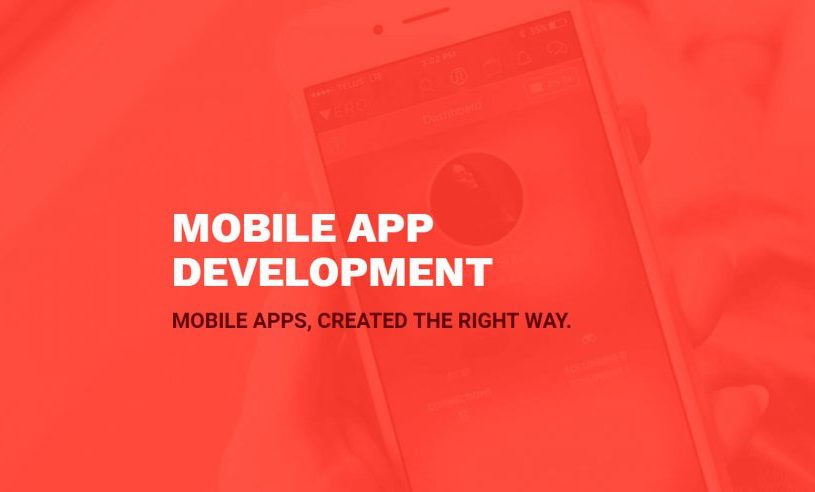Mobile applications are at the heart of our daily digital task-based self. Our day-to-day experience demands always accessible, simplified user experiences from apps — both central themes that have driven the explosion of mobile apps across all aspects of our lives. From communication to news, banking to ecommerce purchases and getting the latest weather, mobile applications are vehicles we choose to complete tasks and consume content through. It’s become our collective first-point dependency.
Here are a few mobile app facts:
- We touch our cell phones an average of 2,617 x a day: According to dscout, people tap, swipe, and click an average of 2,617 times per day. For the top 10 percent of users, this number doubles to 5,427 touches per day.
- We unlock our cell phones 80–110 x a day: iPhone users unlock their phones an average of 80 times per day, while Android users unlock their phones 110 times per day, according to Business Insider. This means that, on an average day, iPhone users check their phones 6 -7 times per hour, or once every 10 minutes!
- We spend on average 5 hours a day browsing: The time we spend on our mobile devices continues to increase. According to research by Flurry Mobile, “the average U.S. consumer spends a whopping 5 hours a day on these devices.”
Given this, mobile application development as a business and marketing solution is a question at the forefront of all industries.
How do you know if a mobile app is the right solution that addresses the needs and wants of your specific target user and your wider target market?
How much will it really cost to build that app and maintain it over time?
These are two questions we’re often asked by our clients and marketers who come to us for guidance at the beginning of their needs analysis.
Here’s a step-by-step guide to development and costs.
To begin, at Sneakers we ask, “Why do you want to build a mobile app? Are you simply looking to ride the wave of your competitors, or did you come across a problem that you feel you can resolve?” First caution — your answer to this will determine whether your mobile app will be successful or not.
Step 1: Define the idea or problem to solve. If you already have an app idea, (and a detailed understanding of the problem it solves) move onto Step 2. If not, read more. What you really need are well articulated problems, and they’re all around us.
Look for problems your target market or user experiences daily. What task needs to be completed as a part of their daily routine. Consistency in an app’s need is mission-critical to its success. Make a long-list and narrow it down.
Step 2: Identified issue and need. Validation will prove that target market user demand exists for your app. Validate your idea by using your in-the-wild, real world customer research channels and amplify that research by using the Google Keyword Planner tool to look for the number of people seeking out an answer to the issue you’ve identified. When performing customer research, we recommend using simple wireframes to get your idea across as cost effectively as possible.
Step 3: Lay out the high-level flow and features. Validation of your app means that you’ve got something that your target market needs. Now it’s time to detail your mobile app onto a simple document, or more commonly used, a wireframing tool to define high-level navigation and features. This flow and features diagram will help bridge the communication gap between you and your developer(s).
Step 4: Remove non-core features. A critical, yet often overlooked step in a first draft or Beta mobile app — which features can you remove for the first phase? Include only the core value of your mobile app idea. Eliminate all “nice to haves”, adding those as updates in later releases.
This simple but overlooked step will keep your initial mobile app development down and get your app to market faster.
Step 5: Branding & User Experience Design. Create a basic “Brand Book” consisting of colors, fonts, logo, and tagline. This will be the backbone of all future design. Bad user experience design can kill a killer mobile app. Good design makes technology useful. So, look for a developer or development team at an agency who puts design (user experience and graphics) first.
Step 6: Bring in the Experts. Module app development programs are ubiquitous, but often cause sacrifices in design, user experience and performance. Ultimately costing more in the long-run and sometimes causing the concept to fail. Seek a company with proven expertise, who values platform architectures with low cost of ownership, great design and has a solid, tenured mobile development team. Do your research and take the time to speak with their references. At Sneakers, it’s part of our DNA.
Step 7: Secure your developer accounts now! You need to register for a developer account with respective mobile app stores to be able to sell or provide your app through their platform. Most likely, your agency will do this for you, it’s a simple, yet sometimes missed step, so be sure to check it has been done.
Step 8: Measurement and Analytics. You need to track downloads, user engagement and retention for your mobile app to ensure that you’ve correctly solved the problem you set out to. These tools will also empower you to add features based on known issues that the data will present to you. Make sure to start with a measurement plan so that your engineering team can properly implement your analytics tracking, and so that you can interpret the results.
Step 9: Feedback. Don’t wait! Be sure to use measurement and analytics feedback immediately. When your mobile app first goes live, watch the first set of usage reports and their behavior with rigor, it will give you insight into how to improve and enhance your app. Keep those enhancements and changes coming. No longer can you release and sit. Once your app is in the hands of users, this is when the real work begins.
Step 10: Adding features. Your first mobile app version will have limited features around the core issue solution. Based on feedback, begin introducing the features that were left out in the beta version, or define new ones.
So how much should a mobile app really cost?
To narrow this down, here’s a summary of what business apps are going to cost from the ground up.
Surveys suggest that the price range for developing an enterprise mobile app is most often from $100,000-$500,000. The Enterprise Mobility Exchange surveyed 300 senior mobile practitioners and published ‘The Global State of Enterprise Mobility’. One finding of the survey was that the most common budget size for the next 12–18 months was $250,000–$500,000
- A VDC survey found mobile apps to cost an average of $140,000 each.
- A Clutch survey of app development companies showed a median price of $171,450 per app.
- A Kinvey survey of CIOs found the average price to be $270,000 per app.
- Cost calculators provided by various providers show a feature-rich app might cost from $267,000 to $360,000.
Mobile apps are not a one time fee though, and there are several variables that need to be factored into the cost. Read on about mobile app development costs in our post The Real Cost of Mobile App Maintenance.
Sneakers works with enterprise and start-up clients to diligently walk through the complete needs evaluation and every step of design to ensure the viability of the app in solving the business problem first. Visit our website to see how Sneakers can take your brand further.
Check out our must read articles about Mobile App Development

Your Best Choice for an Android App Development Company
Your Best Choice for an Android App Development Company Get a Quote Your Best Choice for an Android App Development...
Read Article
The iOS App Development Company That Gets It
The iOS App Development Company That Gets It Get a Quote The iOS App Development Company That Gets It Reach a wider...
Read Article
